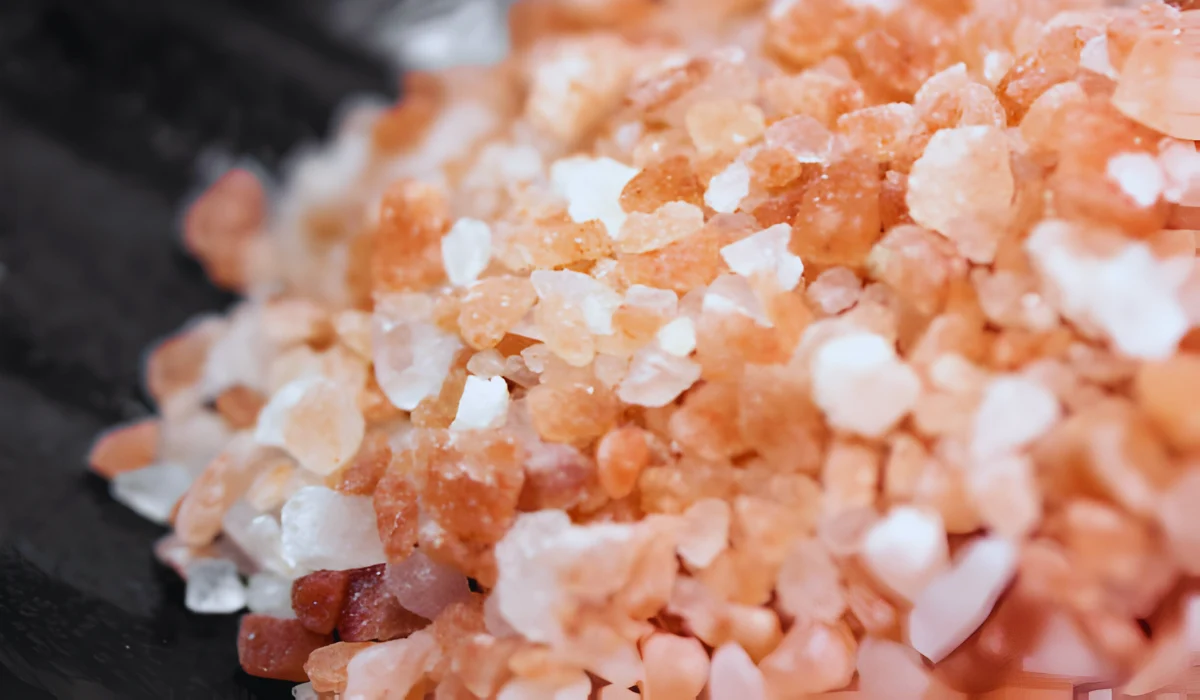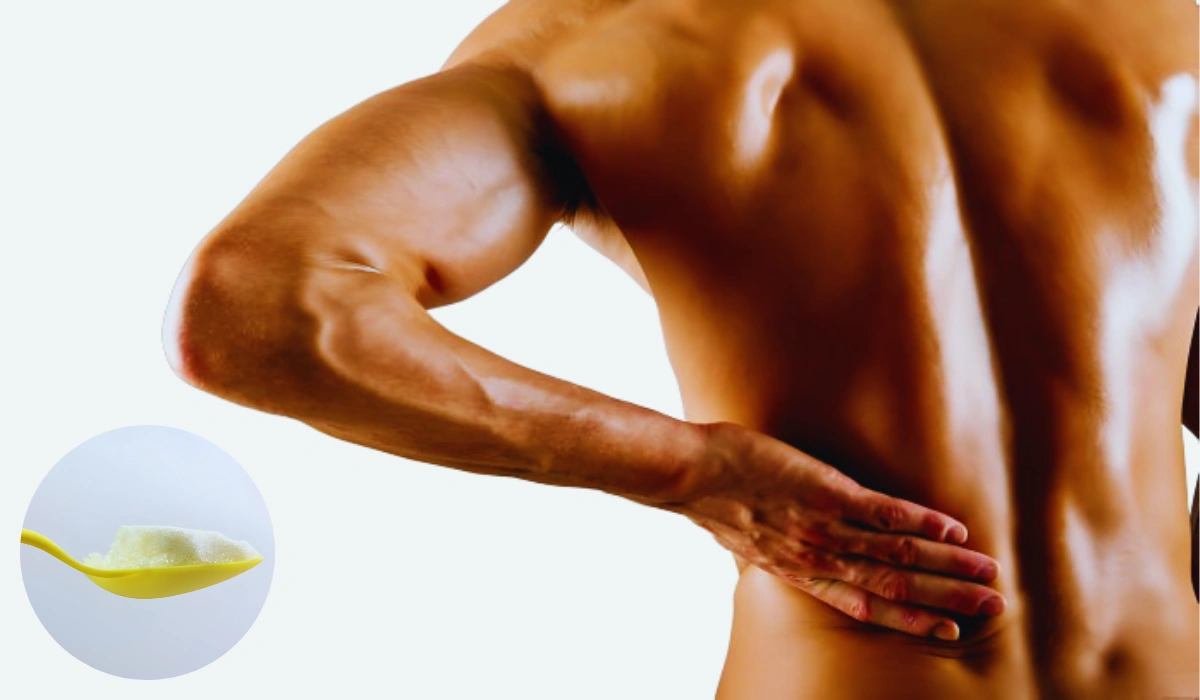Epsom Salt For Muscle Pain: How Does It Work?
Muscle pain can be a frustrating and debilitating experience, often interfering with our daily activities and quality of life. From the soreness after a strenuous workout to the lingering aches from an injury, finding effective relief is a top priority for many individuals. One natural remedy that has gained significant attention in recent years is…

Disclaimer: This article has been generated with the assistance of AI tools. While our research team has fact-checked the content, readers should independently verify information for accuracy and reliability.
Muscle pain can be a frustrating and debilitating experience, often interfering with our daily activities and quality of life. From the soreness after a strenuous workout to the lingering aches from an injury, finding effective relief is a top priority for many individuals. One natural remedy that has gained significant attention in recent years is Epsom salt.
This article will explore the benefits of using Epsom salt for muscle pain relief, providing a comprehensive guide on its composition, mechanism of action, and how to incorporate it into your self-care routine.
Understanding Epsom Salt: Composition And Properties

Epsom salt, scientifically known as magnesium sulfate, is a naturally occurring mineral compound. It is named after the town of Epsom in Surrey, England, where the salt was first discovered. Epsom salt is composed of magnesium, sulfur, and oxygen, and is often referred to as a “mineral salt” due to its crystalline structure.
One of the key properties that make Epsom salt beneficial for muscle pain is its ability to be readily absorbed through the skin. When dissolved in water, the magnesium and sulfate ions present in Epsom salt can be effectively absorbed into the body, providing targeted relief to the affected muscles.
Epsom Salt And Muscle Pain Relief: How Does It Work?
The primary mechanism by which Epsom salt can alleviate muscle pain is through the effects of its two main components: magnesium and sulfate.
- Magnesium: Magnesium is an essential mineral that plays a crucial role in muscle function and relaxation. When muscles are overworked or injured, they can become tense and strained, leading to pain and discomfort. Magnesium helps to counteract this by facilitating the uptake of calcium, which is responsible for muscle contraction. By increasing magnesium levels, Epsom salt can help to reduce muscle tension and promote relaxation, thereby relieving pain.
- Sulfate: Sulfate is another important component of Epsom salt that contributes to its muscle-soothing properties. Sulfate is believed to help flush out lactic acid, a byproduct of muscle activity that can accumulate and cause pain. By facilitating the removal of lactic acid, Epsom salt can alleviate the discomfort associated with muscle soreness and fatigue.
Potential Benefits And Precautions Of Using Epsom Salt For Muscle Pain
The use of Epsom salt for muscle pain relief has been associated with several potential benefits, including:
- Reduced Inflammation: Epsom salt’s anti-inflammatory properties may help to reduce swelling and inflammation in the affected muscles, which can be a significant contributor to pain.
- Improved Circulation: The absorption of magnesium and sulfate through the skin can increase blood flow to the targeted area, promoting healing and reducing discomfort.
- Stress Relief: Magnesium is known to play a role in regulating the body’s stress response, and the use of Epsom salt may help to alleviate stress-related muscle tension and pain.
While Epsom salt is generally considered safe for most individuals, it’s important to be aware of certain precautions:
- Allergic Reactions: Some people may be allergic to the components of Epsom salt, and it’s essential to discontinue use and seek medical attention if any adverse reactions occur.
- Skin Sensitivity: Prolonged or frequent use of Epsom salt baths may lead to skin irritation or dryness, particularly for individuals with sensitive skin.
- Contraindications: Individuals with certain medical conditions, such as kidney or heart problems, may need to consult with a healthcare professional before using Epsom salt, as it may interact with certain medications or exacerbate existing conditions.
Incorporating Epsom Salt into Your Muscle Pain Management Routine
There are several ways to incorporate Epsom salt into your muscle pain management routine:
- Epsom Salt Baths: One of the most popular and effective methods is to soak in an Epsom salt-infused bath. Dissolve 1-2 cups of Epsom salt in warm water and soak for 20-30 minutes, allowing the magnesium and sulfate to be absorbed through the skin.
- Topical Applications: For targeted relief, you can create a DIY muscle-soothing solution by mixing Epsom salt with water or carrier oil (such as coconut or olive oil) and applying it directly to the affected muscle areas.
- Foot Soaks: Soaking your feet in an Epsom salt solution can also provide localized relief for muscle pain in the lower extremities.
- Combination Treatments: Combining Epsom salt with other muscle-soothing methods, such as gentle stretching, heat therapy, or massage, can enhance the overall effectiveness of your pain management routine.
Conclusion
Epsom salt has long been recognized as a natural and effective solution for muscle pain relief. By harnessing the power of magnesium and sulfate, Epsom salt can help to reduce inflammation, improve circulation, and promote muscle relaxation.
Whether incorporated into a soothing bath or applied topically, Epsom salt can be a valuable addition to your self-care routine, providing much-needed relief for muscle discomfort and aiding in the recovery process.
FAQ
Epsom salt and table salt (sodium chloride) are two distinct compounds with different compositions and properties. Epsom salt is primarily composed of magnesium sulfate, while table salt is made up of sodium chloride. The primary difference is that Epsom salt is better suited for muscle pain relief due to its ability to be absorbed through the skin and provide magnesium and sulfate to the body.
For optimal muscle pain relief, it is recommended to soak in an Epsom salt bath for 20-30 minutes. This allows sufficient time for the magnesium and sulfate to be absorbed through the skin and have a therapeutic effect on the affected muscles.
While Epsom salt is generally safe for regular use, it’s best to avoid daily soaking or application, as it may lead to skin irritation or dryness. It’s recommended to use Epsom salt 2-3 times per week, or as needed to manage muscle pain and discomfort.
Epsom salt may interact with certain medications, particularly those related to heart or kidney health. Individuals with pre-existing medical conditions should consult with their healthcare provider before incorporating Epsom salt into their muscle pain management routine.
Epsom salt has a variety of other uses, including as a gardening supplement, a natural laxative, and a skin exfoliant. However, its most well-known and widely-used application is for its muscle-soothing properties and its ability to provide relief for muscle pain and discomfort.
Natalie Smith
Natalie Smith is a highly respected Osteopath with over 15 years of experience in treating a wide range of musculoskeletal conditions. She graduated from the British School of Osteopathy with a Master’s degree in Osteopathic Medicine and is a registered member of the General Osteopathic Council. Natalie’s expertise spans the diagnosis and treatment of issues affecting the muscles, bones, joints, and connective tissues. She utilizes a holistic, patient-centered approach, combining manual techniques such as spinal manipulation, soft tissue massage, and joint mobilization to alleviate pain and restore optimal function. Passionate about educating her patients, Natalie frequently speaks at local health workshops and has authored articles on osteopathic care for several respected medical journals. Her commitment to ongoing professional development ensures she remains at the forefront of the latest advancements in the field of osteopathy.
